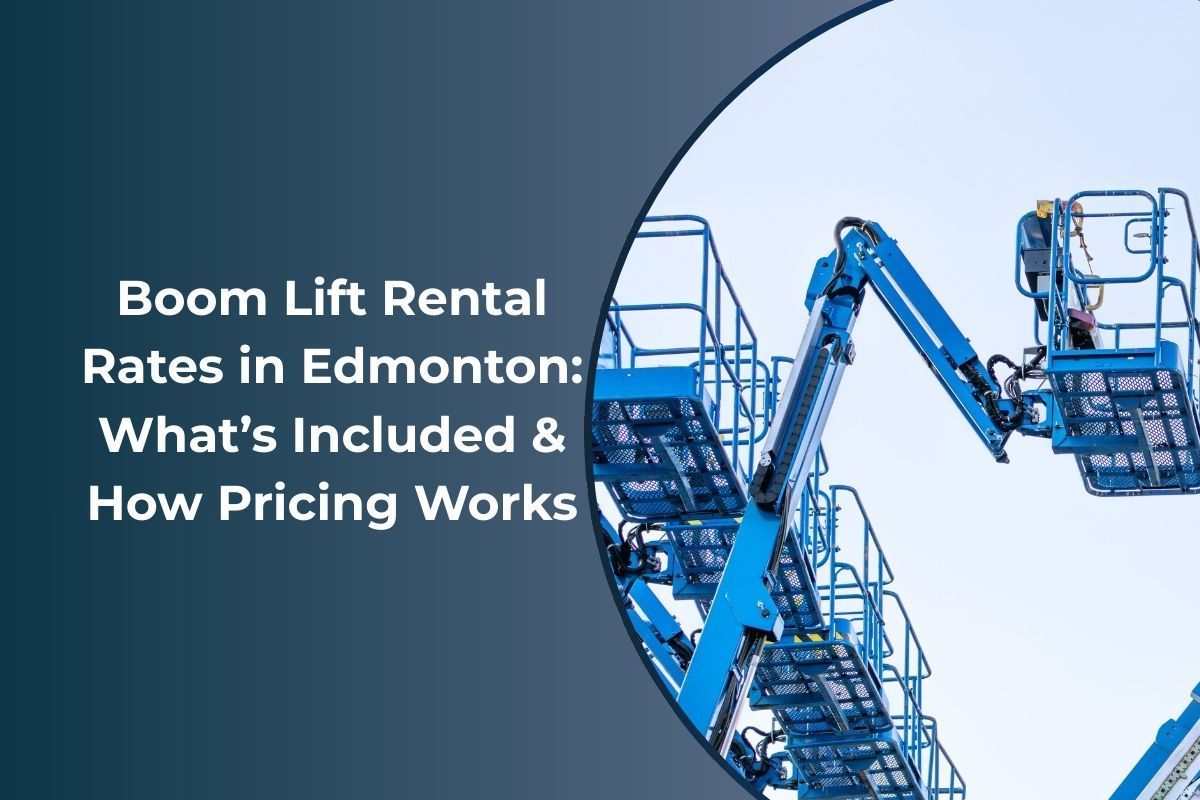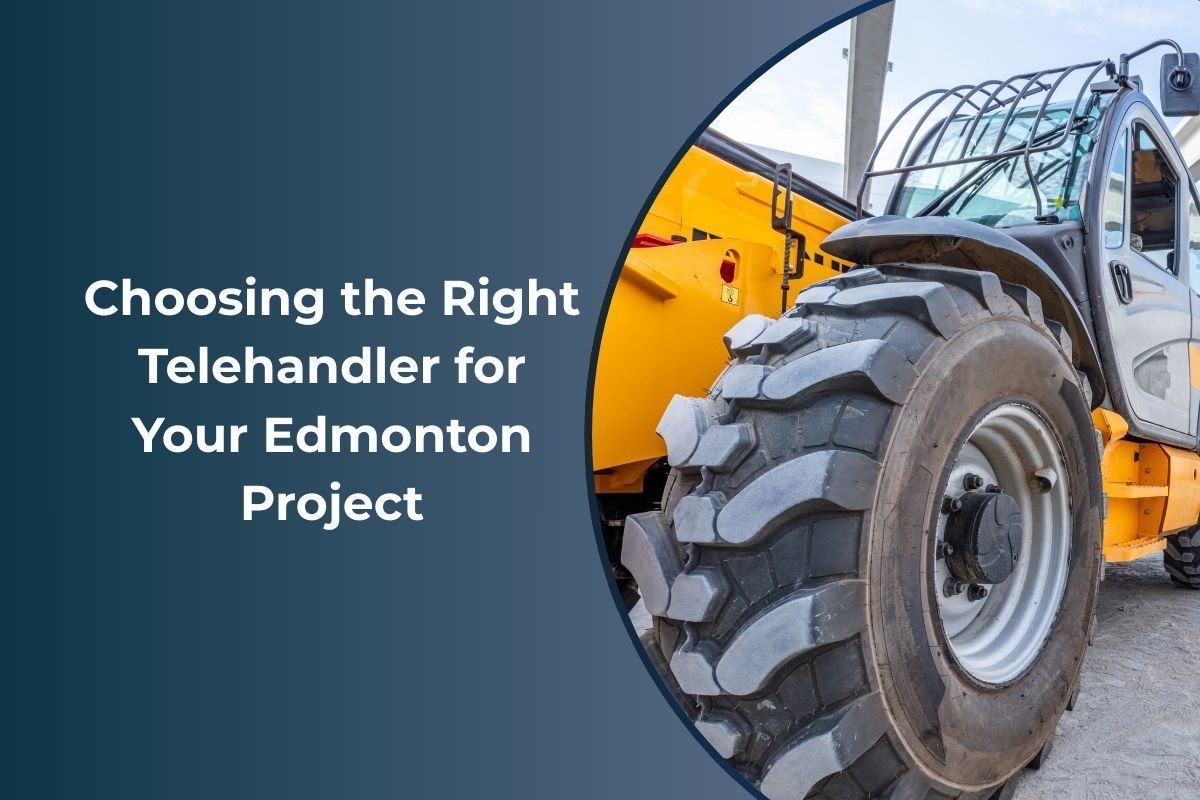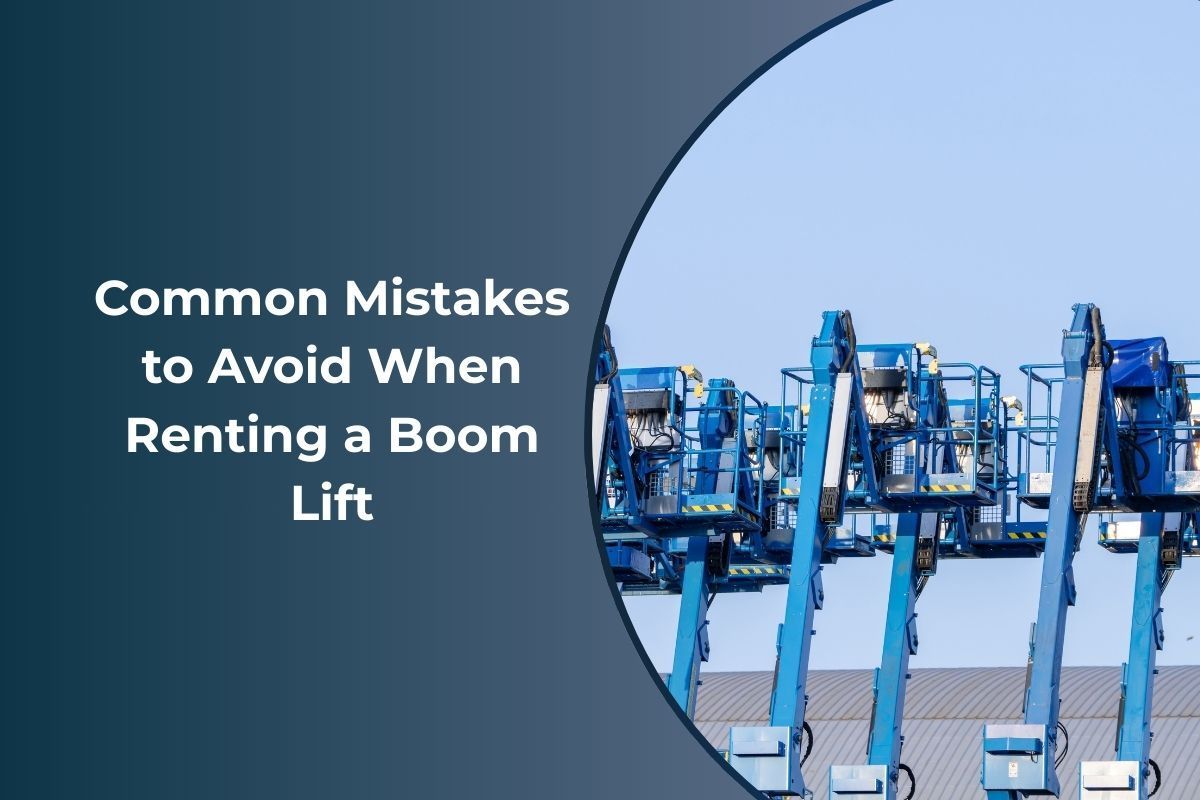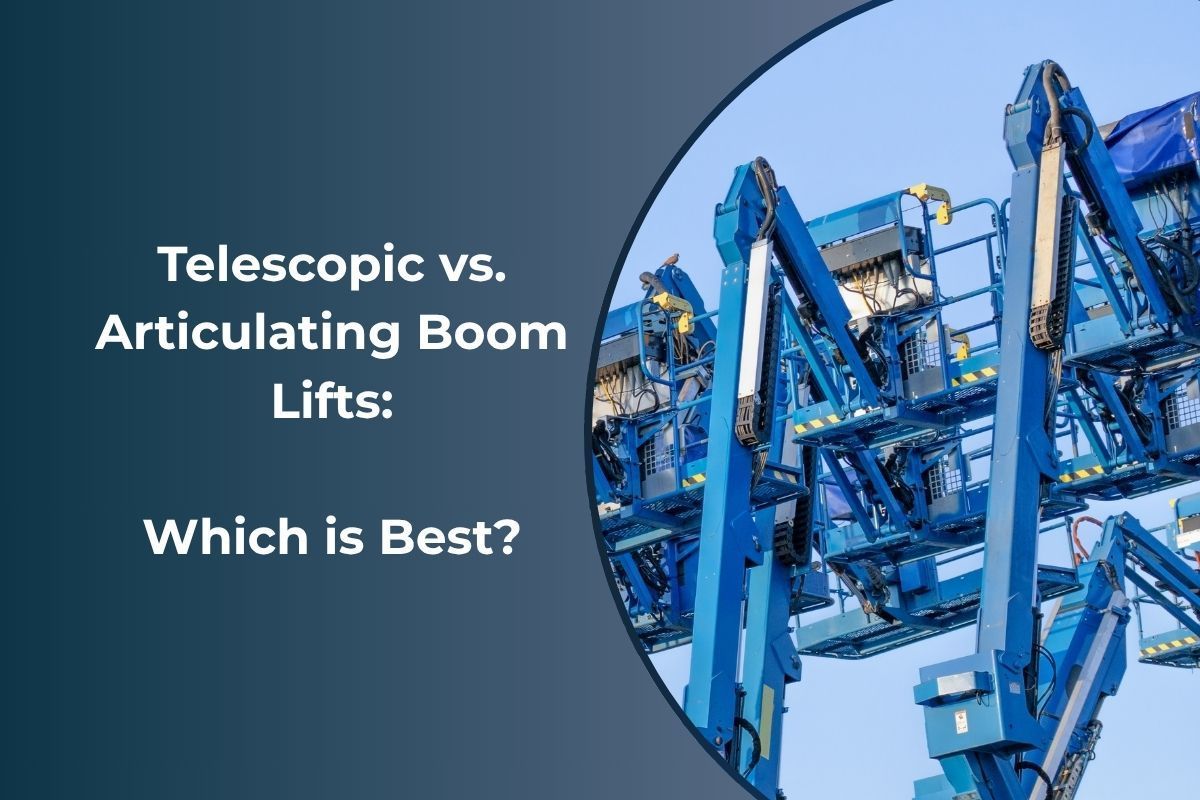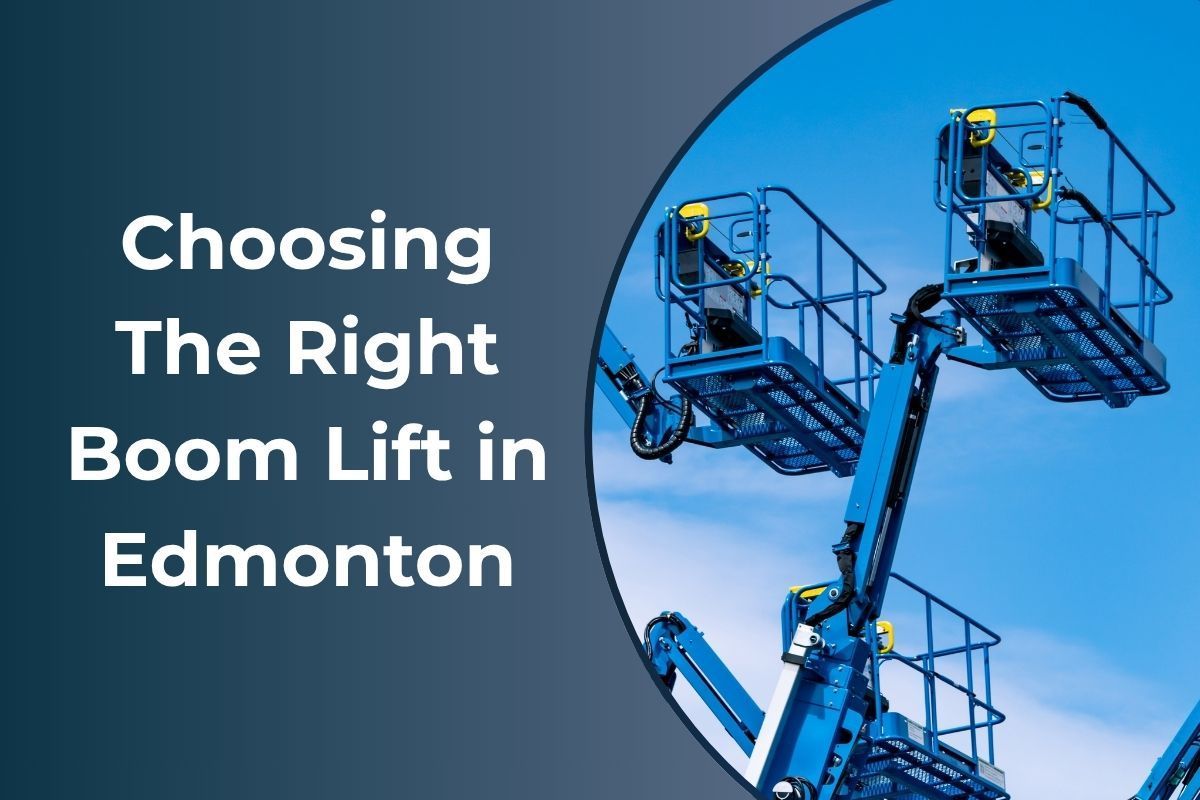Boom Lift Safety Checklist for Edmonton Job Sites | Mandel Rentals
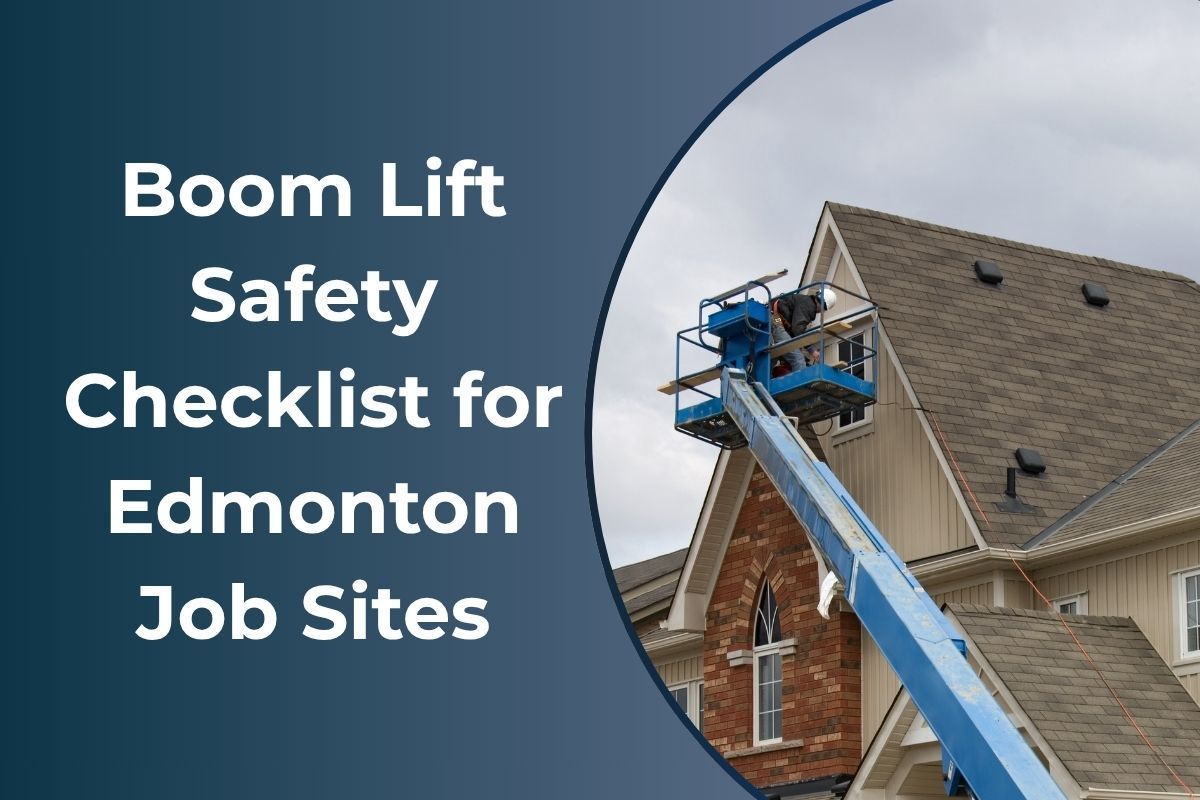
Working at height comes with risk, but with the right preparation and habits, boom lifts can be operated safely and efficiently.
If you’re renting a telescopic or articulating boom lift in Edmonton, this checklist will help keep your crew safe, avoid costly downtime, and ensure compliance with local regulations. (Always be sure to double-check with your specific site requirements.)
Why Is Boom Lift Safety Important?
Boom lifts provide access to hard-to-reach areas, but misuse can lead to accidents, injuries, or equipment damage. Common hazards include:
- Falls from height
- Tip-overs from unstable ground or wind
- Contact with overhead power lines
- Equipment failure from lack of maintenance
Following a consistent safety checklist helps reduce these risks and keeps projects running smoothly.
Pre-Operation Safety Checklist
Before starting work each day:
- Inspect the lift visually
- Look for leaks, cracks, or damaged components.
- Check tires for wear or low pressure.
- Verify safety systems
- Test brakes, steering, and emergency stop.
- Confirm all guardrails and gates are in place.
- Check controls
- Operate the lift from both ground and platform controls to ensure responsiveness.
- Review the operator’s manual
- Each model may have specific safety requirements.
- Wear proper PPE
- Harness with lanyard attached to the designated anchor point.
- Hard hat, gloves, and steel-toed boots.
Job Site Safety Considerations
Ground conditions:
- Ensure the surface is level, firm, and free of debris.
- Avoid soft ground, ice, or slopes that could cause instability.
Clearances:
- Maintain at least 3 metres (10 feet) from overhead power lines.
- Watch for beams, signs, or branches when elevating.
Weather in Edmonton:
- Do not operate in winds above the manufacturer’s rated limit.
- Be cautious of snow, ice, and freezing rain, which can affect traction and stability.
Safe Operating Practices
Never exceed the rated load capacity
The total weight of people, tools, and materials on the platform must stay within the manufacturer’s limit. Overloading can cause the lift to tip, damage the boom, or stress hydraulic systems, leading to unsafe operation.
Operate controls smoothly and avoid sudden movements
Quick or jerky motions can destabilize the lift, especially at full extension. Use steady, deliberate movements to position the platform and keep occupants balanced.
Always keep both feet firmly on the platform floor
Never climb, lean over, or stand on guardrails to reach higher. If the boom lift cannot reach your target safely, reposition the machine or consider a different model with greater reach.
Use the boom lift for its intended purpose only
It is not designed to pull, push, or tow heavy objects. Using it as a crane or winch can create unsafe forces on the boom and lead to equipment failure or tip-overs.
Stay within slope limits when driving
Each model has a maximum allowable slope for safe travel. Exceeding this can reduce stability and increase the risk of tipping. Always check the operator’s manual and use caution on uneven or sloped terrain.
What to Do After Using the Lift
- Lower the platform fully.
- Park on level ground.
- Engage brakes and turn off the machine.
- Remove keys to prevent unauthorized use.
- If it’s a rental, report any issues to the rental provider immediately.
Edmonton-Specific Safety Tips
Operating a boom lift in Edmonton comes with unique challenges — from cold winters to unpredictable weather changes. Here are some local considerations to keep in mind:
Prepare for winter conditions
Cold weather can slow hydraulic systems and affect battery performance. If the temperature is below freezing, allow extra warm-up time and preheat engines if the manufacturer recommends it. Keep de-icing fluid on hand for control panels and latches.
Watch for snow and ice buildup
Ice can form on platforms, guardrails, and control panels overnight. Always inspect and clear surfaces before starting work to prevent slips and ensure controls are functional.
Plan for reduced daylight
During winter months, schedule most operations during daylight hours to improve visibility and reduce risks from poor lighting. If you must work in low light, ensure the platform and work area are well-lit.
Monitor wind speeds
Edmonton can experience sudden gusts, especially in open construction areas. Always check wind speeds before elevating the platform and stop operation if conditions exceed the manufacturer’s wind rating.
Stay visible in construction zones
Use cones, barricades, and reflective signage around your lift. In high-traffic sites, a designated spotter can help manage foot and vehicle traffic around the equipment.
Account for uneven or frozen ground
Frozen soil can be uneven or brittle under heavy loads. Always check stability before positioning the lift and avoid areas where melting snow or ice could create soft ground.
Need a boom lift and want a safety-first rental experience?
At Mandel Rentals, every boom lift is thoroughly inspected and serviced between rentals, so you know it’s ready to perform safely and reliably. We supply well-maintained equipment you can trust, leaving you free to focus on your project with confidence.
Call 780-699-9433 or see our full boom lift rentals in Edmonton today.
Mandel Rentals Resources
